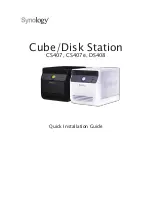
80
IBM System p5 520 and 520Q Technical Overview and Introduction
The operating system cannot program or access the temperature threshold using the SP.
EPOW events can, for example, trigger the following actions:
Temperature monitoring, which increases the fan’s rotation speed when ambient
temperature is above a preset operating range.
Temperature monitoring warns the system administrator of potential environment-related
problems. It also performs an orderly system shutdown when the operating temperature
exceeds a critical level.
Voltage monitoring provides warning and an orderly system shutdown when the voltage is
out of the operational specification.
3.1.4 Self-healing
For a system to be self-healing, it must be able to recover from a failing component by first
detecting and isolating the failed component, taking it offline, fixing or isolating it, and
reintroducing the fixed or replacement component into service without any application
disruption. Examples include:
Bit steering
to redundant memory in the event of a failed memory module to keep the
server operational
Bit-scattering
, thus allowing for error correction and continued operation in the presence
of a complete chip failure (Chipkill™ recovery)
Single bit error correction using ECC without reaching error thresholds for main, L2, and
L3 cache memory
L3 cache line deletes extended from 2 to 10 for additional self-healing
ECC extended to inter-chip connections on fabric and processor bus
Memory scrubbing
to help prevent soft-error memory faults
Memory reliability, fault tolerance, and integrity
The p5-520 and p5-520Q use Error Checking and Correcting (ECC) circuitry for system
memory to correct single-bit and to detect double-bit memory failures. Detection of double-bit
memory failures helps maintain data integrity. Furthermore, the memory chips are organized
such that the failure of any specific memory module only affects a single bit within a four-bit
ECC word (
bit-scattering
), thus allowing for error correction and continued operation in the
presence of a complete chip failure (
Chipkill recovery
). The memory DIMMs also use
memory scrubbing
and thresholding to determine when spare memory modules within each
bank of memory should be used to replace memory modules that have exceeded their
threshold of error count (
dynamic bit-steering
). Memory scrubbing is the process of reading
the contents of the memory during idle time and checking and correcting any single-bit errors
that have accumulated by passing the data through the ECC logic. This function is a
hardware function on the memory controller and does not influence normal system memory
performance.
Summary of Contents for REDPAPER 520Q
Page 2: ......
Page 8: ...vi IBM System p5 520 and 520Q Technical Overview and Introduction...
Page 14: ...xii IBM System p5 520 and 520Q Technical Overview and Introduction...
Page 38: ...24 IBM System p5 520 and 520Q Technical Overview and Introduction...
Page 104: ...90 IBM System p5 520 and 520Q Technical Overview and Introduction...
Page 108: ...94 IBM System p5 520 and 520Q Technical Overview and Introduction...
Page 109: ......
















































